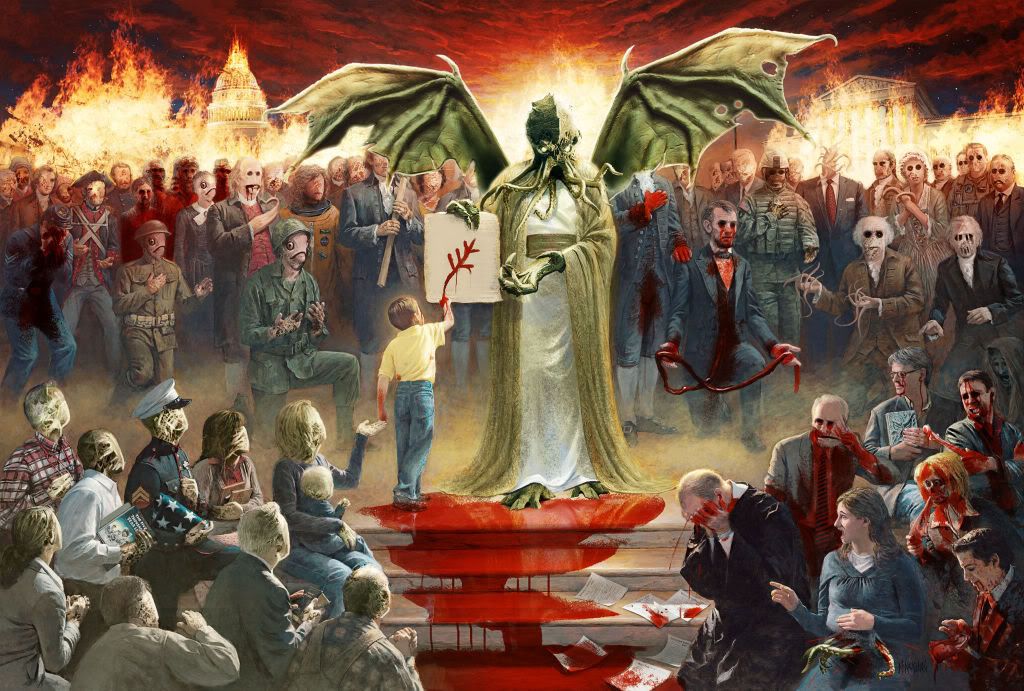Atheism And Teleology
Daniel Fincke has just posted an interesting response to some of Leah Libresco's statements regarding her conversion to Catholicism. He starts out by discussing whether atheism precludes teleological ethics, which is of particular interest to me because he says "no" and and I say "yes". Daniel has a lot to say in response; read the entire thing. I won't try to summarize all of his argument, but the heart of it seems to be
So, in this context, I am an atheistic virtue ethicist requiring no divine agency for the teleological dimensions of my ethics to make minimal sense and have minimal coherence. I am just describing purely naturalistically occurring patterns as universals or forms. I am saying that since humans’ very natures are constituted by a specific set of powers, fulfilling them is incumbent on humans as the beings that we are. It is irrational and a practical contradiction to destroy the very precondition of our own being (all things being equal). We have a rational imperative instead to flourish maximally powerfully according to the powers which constitute us ourselves.
I concur with Daniel's assessment that there are naturally recurring patterns of human development and that we have a rational motivation to try to make the best of the hand we're dealt ("flourish maximally"). In that sense it is minimally coherent to say that an atheist who is striving to flourish maximally is teleologically-oriented i.e. is ends-driven rather than rule driven. However, I don't think it necessarily follows that maximal flourishing is a sufficient basis for a teleological system of ethics.
One problem that I see is that "maximal flourishing" is exceedingly vague. It is self-evident to me that a system of ethics should provide a guide to right action; I should be able to assess how my behavior conforms to the system, presumably with the overall goal of changing my behavior if necessary (i.e. trying to become a better person). However, it is by no means clear that I, through a process of introspection, can determine what behavioral changes are required in order to enhance my flourishing. It would seem to be at least as difficult, if not more so, for us to make that assessment with respect to others, in which case I see no way to construct a mutually-acceptable ethical framework for social interaction.
Moreover, the idea of maximal flourishing leads to results which are counter-intuitive. Taken in conjunction with Fincke's concept of "goodness as effectiveness" it would seem to imply that it's OK to be a rapist as long you're good at it. Presumably he has a good answer to this, but that would imply that there's more to his system of teleological ethics than a simple calculation of flourishing.
Daniel's system, to the extent which he's defined it, provides accommodation for a vast swath of human behavior. Leah, on the other hand, seems to having something slightly more constrained in mind:
But more and more, my atheist friends and sparring partners thought I’d gone wrong one step back, and objected to my holding to the idea of morality as human-independent and objective (i.e. we uncover it like archeologists, we don’t build or design it like architects). To top it off, I’d switched to thinking of morality in a virtue ethics framework (your moral imperative is to reform your character and try build up a habitual attraction to right action). The trouble is, virtue eithics [sic] kind of presupposes teleology (these is some particular form you are called to embody) and my atheist friends thought that was pretty far out of bounds.
She seems to be calling for something approaching a Platonic ideal of personal behavior. It looks to me like Leah and Daniel are both saying "virtue ethics", but the ethical systems which they have in mind are so vastly different as to be mutually unintelligible. Ultimately I still think that Leah has the best of it; Daniel's proposed metrics for goodness don't seem strong enough to for the basis of a workable ethical system.


